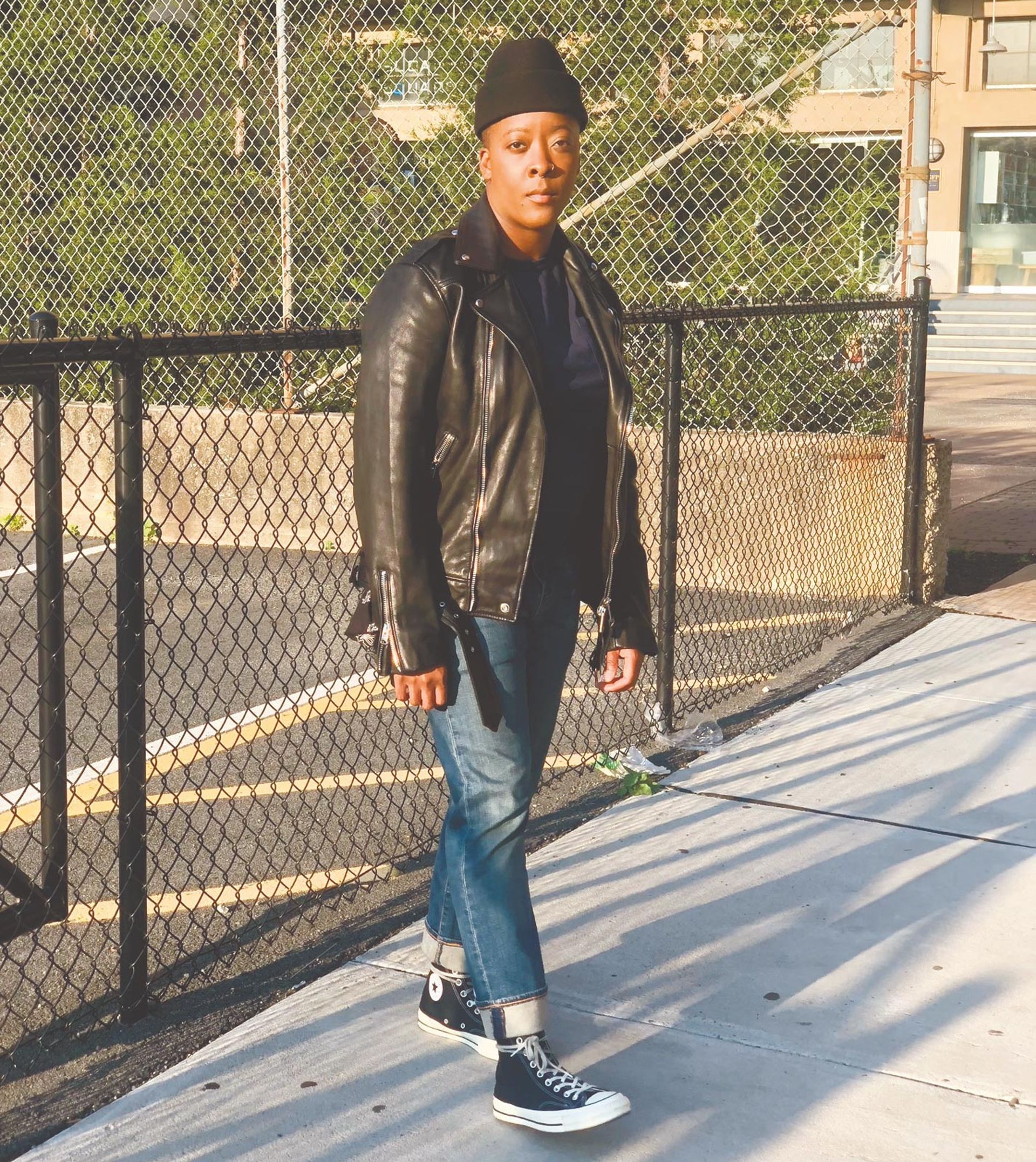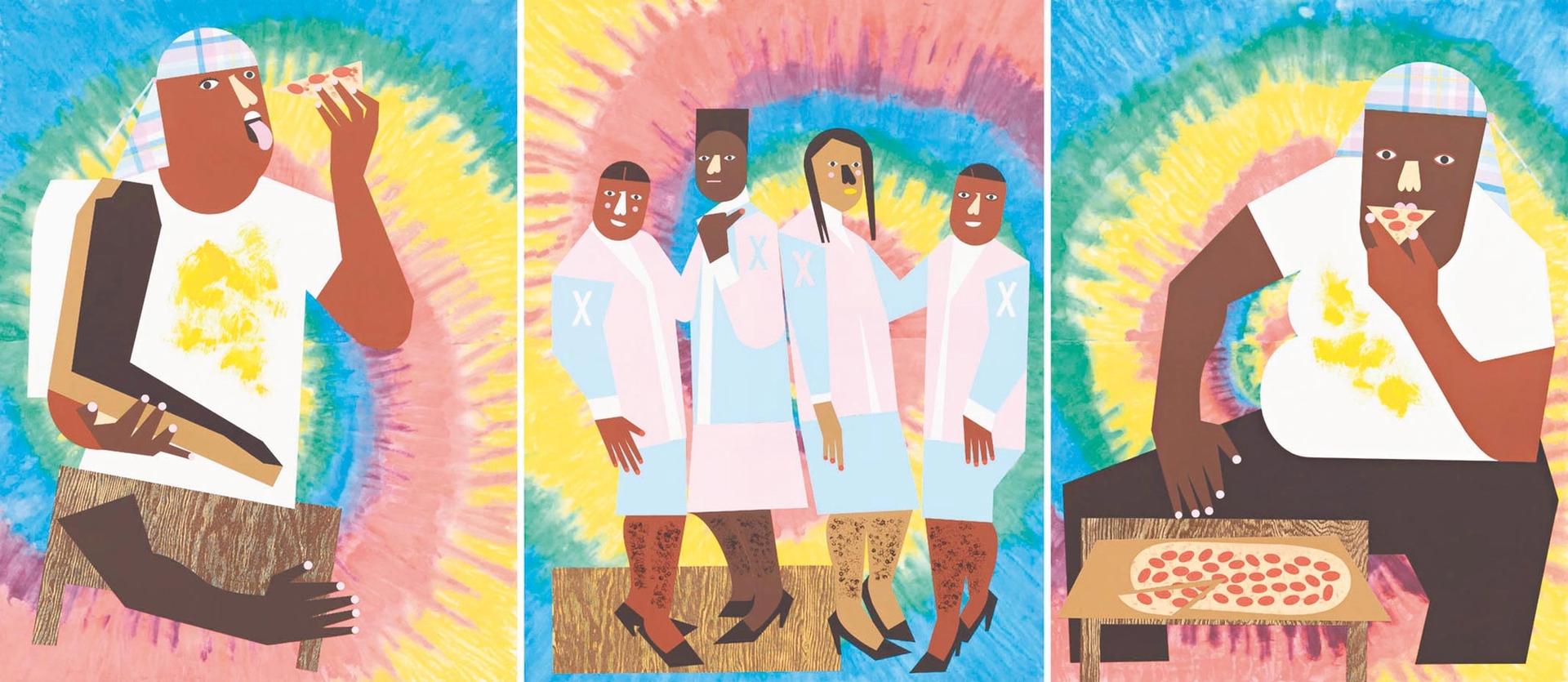The works in Nina Chanel Abney’s solo exhibition at the Institute of Contemporary Art (ICA) Miami, Big Butch Energy, continue the eye-catching, collage-like geometric precision and dynamic social compositions of her past work, while wading deeply into previously unexplored conceptual terrain.
The Chicago-born, New York-based artist continues to explore the realities of identity at its convoluted intersections. The scenes are lively, dancing, as her combinations of seemingly simple geometric shapes join into wide-ranging commentaries on the Black body in the literal and imagined spaces of gender, sexuality, race and lived experience.
Through the lens of fraternity and sorority life on university campuses—fictionalised and recognisable—Abney tells the story of a facet of American life that informs global perceptions and stereotypes relating to gender performance and toxic expressions of masculinity and femininity. She also touches on issues of racial diversity and access in these charged environments. Even so, there is humour in the works and, for the artist, some pleasure to be taken in the fleeting hilarity of these social environments she has rendered by cutting and pasting pastel strips, circles, squares and lettering to cement a scene.

Nina Chanel Abney says she hopes visitors to her show will have an “experience filled with visual delight and deep reflection” Courtesy of the artist
The Art Newspaper:Your new work for Big Butch Energy references traditions of Baroque portraiture and fraternity life, as well as scenes from popular slapstick comic films like Animal House. The focus on so-called Greek life on US university campuses as a way to explore and showcase the complexity of these social environments in relationship to race, gender and sexuality seems especially timely given recent reports that undergraduate admissions are falling and Greek life recruitment has decreased since the start of the Covid-19 pandemic. When did this particular investigation begin for you and how has it evolved?
Nina Chanel Abney: About a year ago, I decided to rewatch movies such as Animal House and Porky’s, a certain genre of movie that in my younger years had an impact in informing my perceptions of masculinity and femininity. Reflecting on these films over 20 years later, I can clearly see that while their depictions of Greek and college life informed my thinking about identity, they simultaneously prorogued an independent formation of my own. Big Butch Energy is not about the realities of Greek life, specifically. I used depictions of Greek and college life in films as the catalyst to explore representations of masculinity and how these references are in opposition with my own identity as a masculine-presenting woman.
What are the traditional signifiers of gender and sexuality and how can we subvert them?

Abney’s What I Wanted vs. What I Got tryptich (2022) from her Miami show exhibit the artist’s signature colour blocking aesthetic Courtesy of the artist and Pace Prints
Your work utilises eye-catching colour schemes, pictorial languages and symbols to drive a narrative across the breadth of a work’s canvas and a series. What are the key colours, clues, symbols and shapes connecting the body of work in Big Butch Energy? How do they challenge the social environments of Greek life, fraternities and sororities?
There are patterns and overt symbols of a traditional depiction of college life, such as pizza, tie-dye, tartan, collegiate attire and football, but there are also elements working stealthily to oppose these more obvious indications. I’m interested in what determines how a viewer identifies or genders a figure in a work of art. What are the traditional signifiers of gender and sexuality within figurative art and how can we excavate and subvert them?
What do you hope visitors to the ICA Miami experience will take away from Big Butch Energy?
I hope visitors will be able to have a personal experience with the work and subject matter that resonates—an experience that is filled with visual delight and deep reflection. My hope is also that the audience will have an enjoyment and a greater appreciation for the printmaking and collaging process, and perhaps will reflect on ways in which they have or have not been complicit in perpetuating harmful ideas around identity and gender.
• Nina Chanel Abney: Big Butch Energy, until 12 March 2023, Institute of Contemporary Art, Miami


